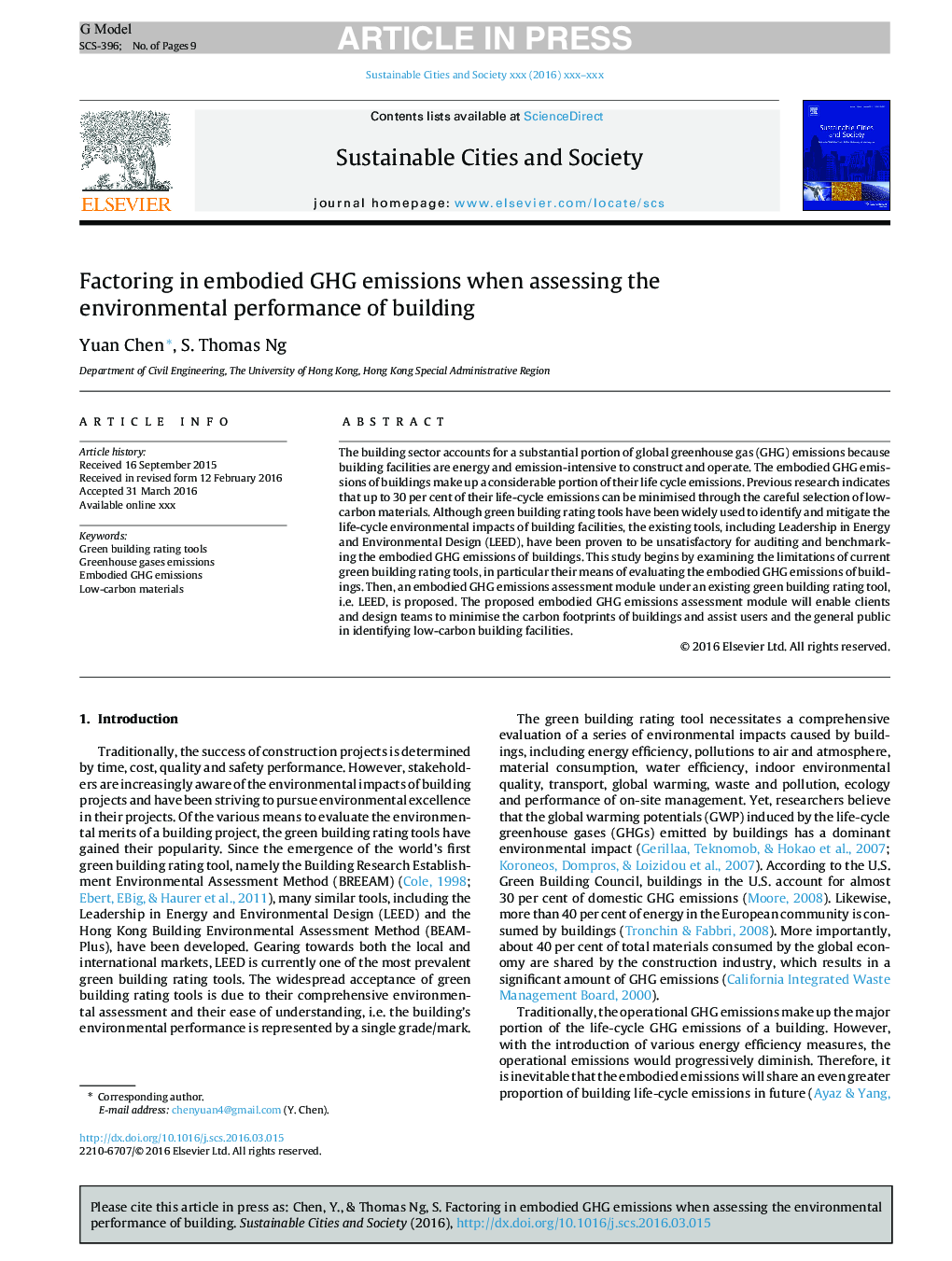| Article ID | Journal | Published Year | Pages | File Type |
|---|---|---|---|---|
| 4928299 | Sustainable Cities and Society | 2016 | 9 Pages |
Abstract
The building sector accounts for a substantial portion of global greenhouse gas (GHG) emissions because building facilities are energy and emission-intensive to construct and operate. The embodied GHG emissions of buildings make up a considerable portion of their life cycle emissions. Previous research indicates that up to 30 per cent of their life-cycle emissions can be minimised through the careful selection of low-carbon materials. Although green building rating tools have been widely used to identify and mitigate the life-cycle environmental impacts of building facilities, the existing tools, including Leadership in Energy and Environmental Design (LEED), have been proven to be unsatisfactory for auditing and benchmarking the embodied GHG emissions of buildings. This study begins by examining the limitations of current green building rating tools, in particular their means of evaluating the embodied GHG emissions of buildings. Then, an embodied GHG emissions assessment module under an existing green building rating tool, i.e. LEED, is proposed. The proposed embodied GHG emissions assessment module will enable clients and design teams to minimise the carbon footprints of buildings and assist users and the general public in identifying low-carbon building facilities.
Keywords
Related Topics
Physical Sciences and Engineering
Energy
Renewable Energy, Sustainability and the Environment
Authors
Yuan Chen, S. Thomas Ng,
